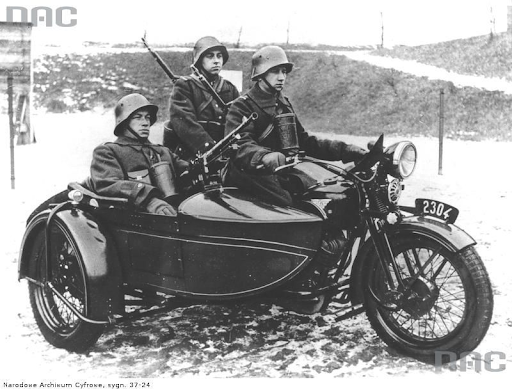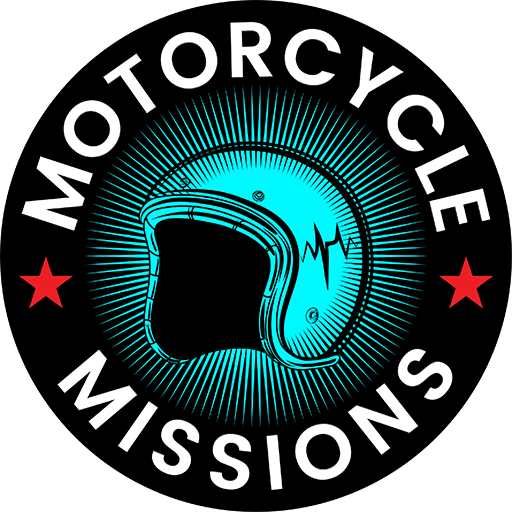
Military Influence on Motorcycle Design
Share
From the mud-churned trenches of World War I to today’s battlefields, highly surveilled by GPS and AI tech, military needs have been a powerful force in shaping motorcycle design. War demands—durability, reliability, and adaptability—initially pushed engineers and manufacturers to create machines that could survive conditions far harsher than any civilian rider might face. Today’s wars require quieter, less detectable machines like stealth-capable electric bikes. But one thing remains the same: when those innovations trickle down to the public, they leave enduring impacts on the motorcycles we civilians ride.
World War I – The Motorcycle Replaces the Horse
When WWI broke out, armies needed a faster, more efficient alternative to horse-mounted messengers. Telegraph lines were targets of enemy fire and signal lights or smoke signals could give away the location of British troops and were at risk of interception by enemy interpreters. The British Army recognized that motorcycles had the potential to deliver messages over rugged terrain quickly while evading detection. The result was a boom in rugged, single-speed motorcycles built to handle rough terrain and limited maintenance. Triumph produced 30,000 units of its small, military motorcycle. At only 4 horsepower, it was practically a motorized bicycle, but it got the job done. Before long, American brands like Harley-Davidson and Indian were manufacturing their own military motorcycles–but at 15–18 horsepower, these machines offered greater speed and carrying capacity than their European counterparts.

Ultimately, Harley-Davidson, Indian, Triumph, and BSA produced thousands of bikes with simple but robust designs—large spoked wheels, reinforced frames, and sidecar attachments for hauling gear or stretchers. These bikes contributed tremendously to the Allied victory, but during peacetime, their rugged design and large production numbers resulted in a new generation of civilian and veteran riders. The lessons learned in WWI established a design priority that still guides motorcycle engineering today: function over form when reliability is at stake.
World War II – The Golden Age of Military Motorcycles
WWII brought mass production, standardized parts, and purpose-built military models. The Harley-Davidson WLA “Liberator,” for example, was designed with rugged tires, high-clearance fenders, and air-cleaning systems to keep engines running in dusty or muddy conditions. British forces deployed the BSA M20 and Norton 16H, while German engineers developed the BMW R75 and Zündapp KS 750—sidecar-equipped machines with two-wheel drive, reverse gear, and even lockable differentials for extreme conditions.
Military motorcycles in the hot, desert lands of North Africa routinely overheated, leading Harley-Davidson and Indian to design something suited to the desert conditions. Anyone who has ever seen the XA model will note that they directly borrow their “boxer twin” design from BMW R bikes, with opposed cylinders offering hyper-efficient air cooling. The military focus on quick field repairs also influenced design. Bikes were built with tool-free access to key components, interchangeable parts, and simple carburetors that could be stripped and cleaned in minutes.

Post-War Surplus and the Rise of Custom Culture
After WWII, surplus military motorcycles flooded the civilian market at bargain prices. Young riders stripped them down for speed and style, sparking the bobber and chopper movements. Many postwar manufacturers kept producing military-inspired features—sturdy frames, wide handlebars, and weatherproof electrical systems—that appealed to riders tackling rough roads or long-distance touring. The ADV (adventure) and dual-sport bikes we see today trace their DNA directly to these military workhorses.

Cold War and Modern Military Tech
During the Cold War, lightweight dual-purpose motorcycles became standard for reconnaissance and rapid deployment. Military demands pushed advances in suspension, off-road tires, and lighting systems—features now common on civilian dirt bikes and dual-sports.
In the 21st century, military motorcycle design has embraced stealth and efficiency. Diesel-powered Kawasaki KLR650s run on NATO-standard fuel, while electric dirt bikes like the Zero MMX allow special operations to move silently and without heat signatures—technology that’s beginning to cross into the civilian market.
The Lasting Legacy
Every time you fire up an adventure bike, ride a stripped-down bobber, or take a dual-sport off-road, you’re benefiting from over a century of military-driven innovation. The same priorities—durability, versatility, and field serviceability—that kept soldiers moving now keep riders exploring.
For Motorcycle Missions, the connection between military motorcycles and modern riding is more than mechanical—it’s about resilience, adaptability, and the way motorcycles can carry us forward, whether on the battlefield or backroads.
